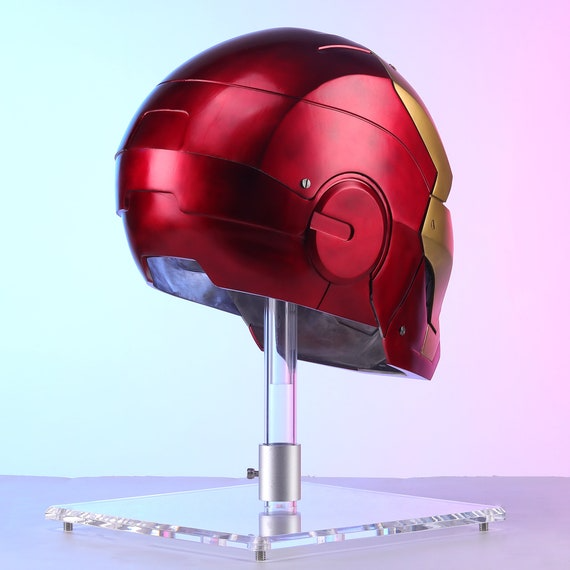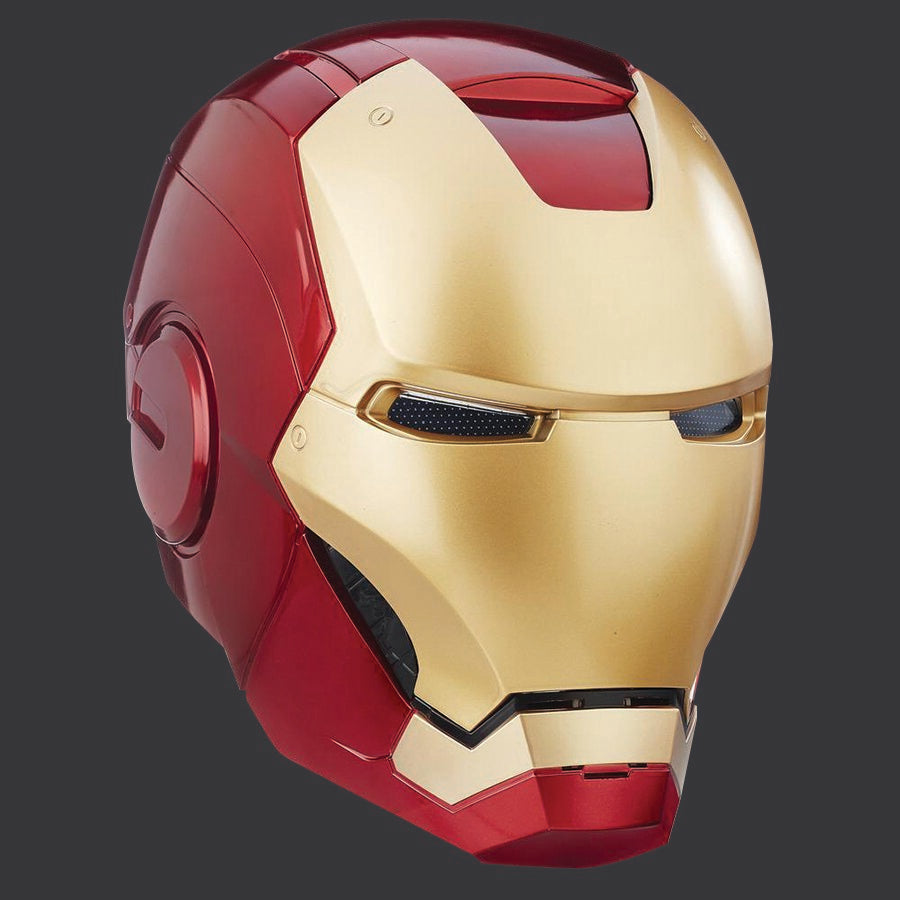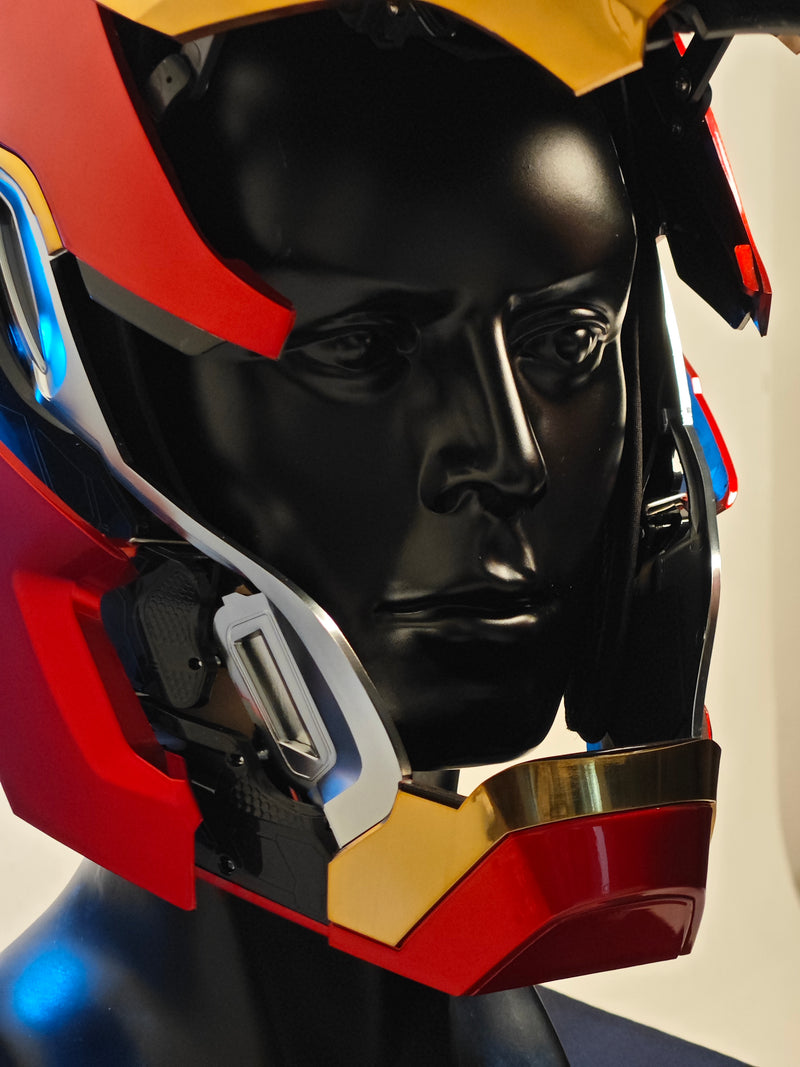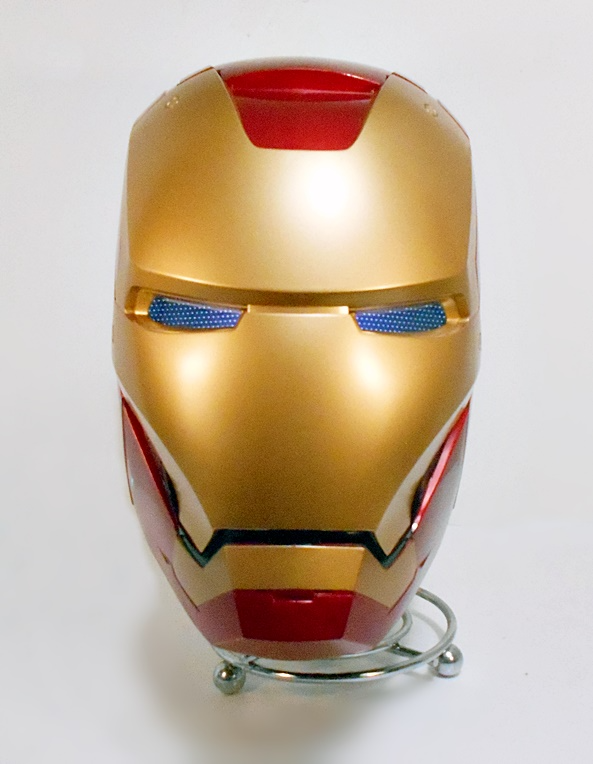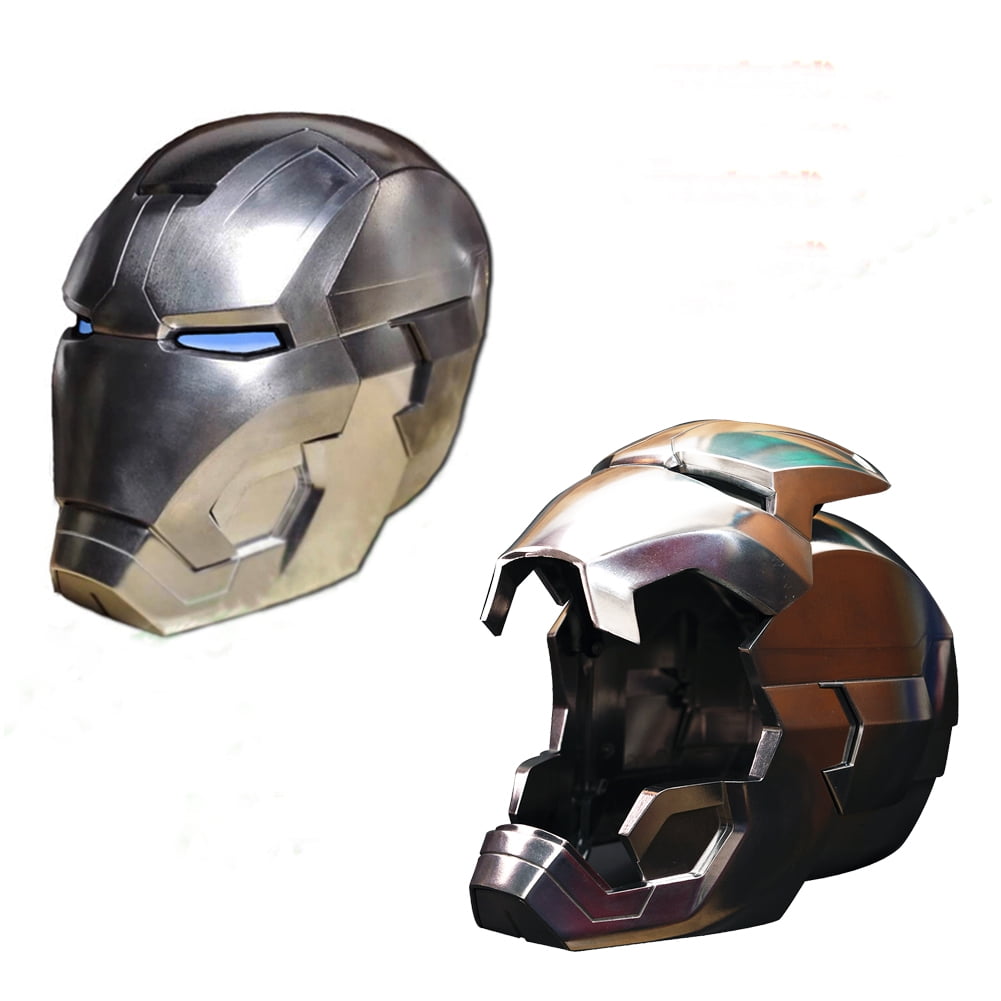Iron Man, the superhero alter ego of genius inventor Tony Stark, has captured the imagination of fans worldwide since his comic book debut in 1963. Central to his persona is the iconic Iron Man helmet, a symbol of innovation, power, and the indomitable spirit of its wearer. This advanced piece of technology encapsulates not only Tony Stark’s brilliance but also represents the fusion of human ingenuity and cutting-edge tech. In this article, we delve into the intricate details, evolution, and cultural impact of the Iron Man helmet.
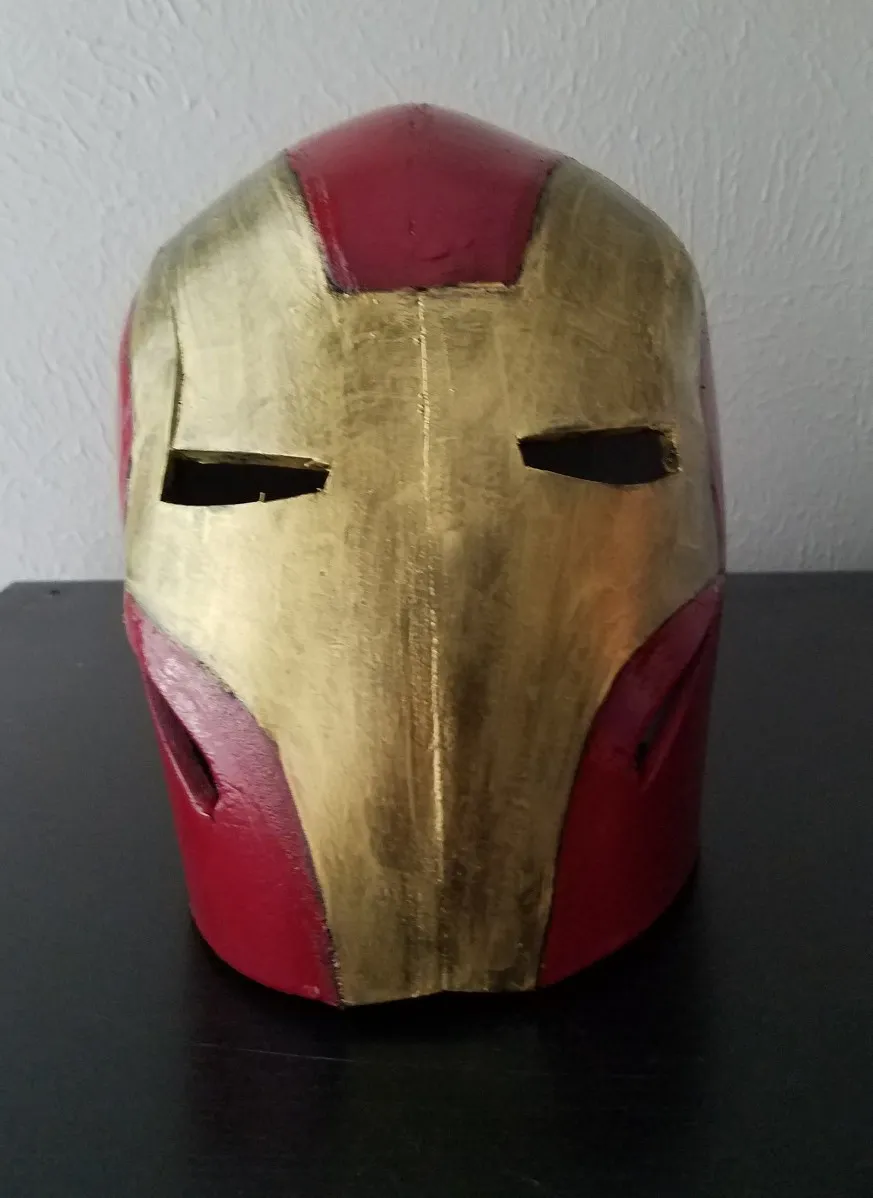
The Evolution of the Iron Man Helmet
From Sketches to Screen
The original Iron Man helmet, as depicted in the comics, was a relatively simple design with a red faceplate and gold trim, reflecting the aesthetic of the early 1960s. As decades passed, artists reimagined the suit countless times, gradually adding complexity and detail to the helmet. However, it wasn’t until the release of the 2008 “Iron Man” film, starring Robert Downey Jr., that the helmet transformed into the hyper-realistic, technologically advanced artifact we know today.
Technological Marvel
Advanced Materials and Construction
In the cinematic universe, the Iron Man helmet is constructed using a fictionalized version of nanotechnology and advanced alloys, like Vibranium and Adamantium, making it lightweight yet incredibly durable. Its exterior is resistant to extreme temperatures, impacts, and even energy blasts, while remaining flexible enough to accommodate Tony Stark’s facial expressions.
Integrated Systems and AI
Embedded within the helmet is a sophisticated heads-up display (HUD), providing Stark with real-time data on everything from altitude and speed to enemy positions and system diagnostics. The helmet’s AI system, JARVIS and later F.R.I.D.A.Y., serves as a constant companion, assisting with navigation, threat analysis, and even engaging in witty banter.
Cultural Impact and Symbolism
A Symbol of Heroism
Beyond its technological prowess, the Iron Man helmet has become a symbol of heroism and resilience. Tony Stark’s journey from a self-centered billionaire to a self-sacrificing superhero resonates deeply, and the helmet embodies this transformation. When the red-and-gold mask slides into place, it marks the transition from man to Iron Man, signifying the donning of responsibility and courage.
Inspiring Innovation
Real-World Applications
The Iron Man helmet has sparked inspiration for real-world technological advancements. Engineers and researchers have drawn from its conceptual design to develop augmented reality displays, advanced prosthetics, and even exoskeletons for military and medical applications. The idea of integrating AI assistants into wearable technology is increasingly becoming a reality, mirroring Stark’s interactions with JARVIS and F.R.I.D.A.Y.
Fan Culture and Collectibles
The Iron Man helmet transcends the screen, occupying a significant space in pop culture and fan merchandise. Replica helmets, meticulously crafted with LED lighting and sound effects, are highly sought after by collectors and cosplayers alike. They serve as tangible reminders of the character’s legacy and the aspirational qualities he embodies.
The Future of the Iron Man Helmet
Advancements in Wearable Technology
Integration with Smart Cities
As smart cities become a reality, the Iron Man helmet concept could inspire integration with urban infrastructure. Imagine a helmet that not only enhances individual capabilities but also communicates with city systems, alerting wearers to real-time traffic updates, emergency services, or environmental hazards. Such a device would embody the harmonious blend of personal safety and communal interconnectedness that Iron Man represents.
Augmented Reality and Enhanced Vision
Next-Gen HUD
The helmet’s heads-up display (HUD) has long been a cornerstone of its functionality. Future iterations might incorporate advanced augmented reality (AR) technology, overlaying critical information directly onto the wearer’s field of view. This could range from detailed 3D maps and object recognition to advanced medical imaging for emergency responders, revolutionizing how professionals across various industries operate in the field.
Artificial Intelligence and Emotional Intelligence
AI Companionship Evolved
Building upon JARVIS and F.R.I.D.A.Y.’s capabilities, future helmets could integrate AI with enhanced emotional intelligence. These AI assistants would not just manage data and systems but also provide empathetic support, recognizing wearers’ emotional states and responding accordingly. This empathic AI could play a crucial role in mental health management, stress reduction, and overall user well-being.
Sustainability and Eco-Friendly Materials
Green Tech for a Greener Future
Considering the growing emphasis on sustainability, future Iron Man-inspired helmets may utilize eco-friendly materials and energy-efficient technologies. Solar panels integrated into the helmet’s surface could recharge its batteries, while recycled or biodegradable components would minimize environmental impact. This shift towards green technology would align with Tony Stark’s later-life commitment to responsible innovation.
Medical Applications and Prosthetics
Enhancing Human Potential
The Iron Man helmet’s technology holds immense potential in medical fields, particularly in developing advanced prosthetics and assistive devices. Helmets equipped with neuro could enable direct brain control over prosthetic limbs, restoring mobility and improving quality of life for amputees. Additionally, they could incorporate sensory feedback systems, allowing users to ‘feel’ through their artificial limbs, further bridging the gap between man and machine.
Space Exploration and Extraterrestrial Applications
Pioneering the Final Frontier
As humanity looks towards colonizing other planets, the Iron Man helmet’s design principles could inspire next-gen spacesuit helmets. These would need to withstand harsh extraterrestrial environments, providing not just protection but also advanced life support systems, enhanced communication capabilities, and real-time analysis of alien terrains. The helmet could even incorporate haptic feedback to navigate zero-gravity environments more intuitively.
A Vision of the Future
The Iron Man helmet stands as a beacon of what we can achieve when we push the boundaries of technology and imagination. Its influence extends beyond entertainment, igniting a drive for innovation that spans multiple industries. As we look to the future, the helmet’s legacy will undoubtedly continue to inspire new generations of inventors and visionaries, propelling us towards a world where the line between science fiction and reality blurs ever further. With each advancement, we come closer to realizing Tony Stark’s dream of harnessing technology for the betterment of all humanity.
Conclusion
In conclusion, the Iron Man helmet is far more than a piece of armor; it’s a testament to human potential, a beacon of hope, and a catalyst for technological progress. Its evolution mirrors our own aspirations, reminding us that with creativity, determination, and a bit of technological wizardry, the seemingly impossible can become a reality.
